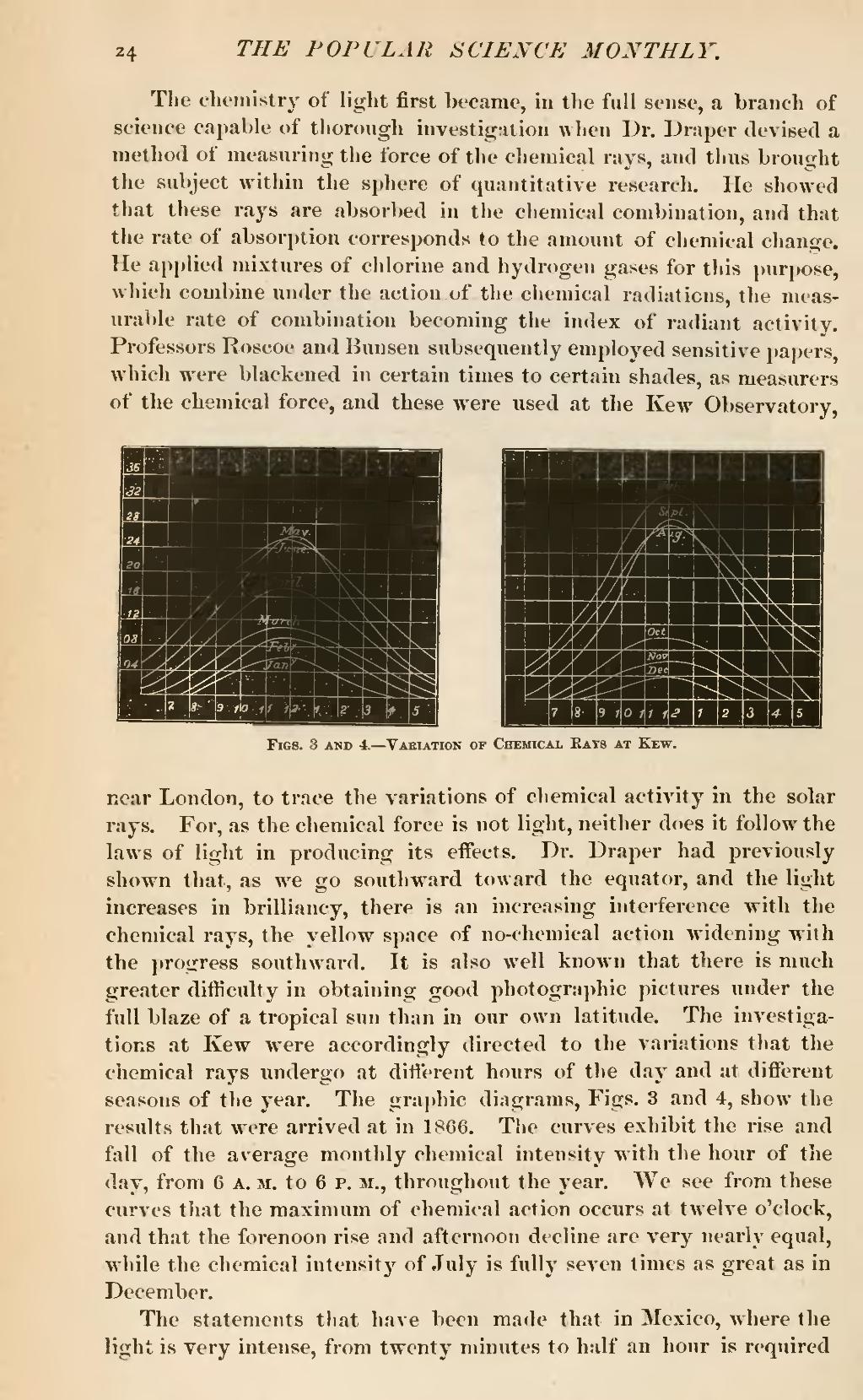The chemistry of light first became, in the full sense, a branch of science capable of thorough investigation when Dr. Draper devised a method of measuring the force of the chemical rays, and thus brought the subject within the sphere of quantitative research. He showed that these rays are absorbed in the chemical combination, and that the rate of absorption corresponds to the amount of chemical change. He applied mixtures of chlorine and hydrogen gases for this purpose, which combine under the action of the chemical radiations, the measurable rate of combination becoming the index of radiant activity. Professors Roscoe and Bunsen subsequently employed sensitive papers which were blackened in certain times to certain shades, as measurers of the chemical force, and these were used at the Kew Observatory,

Fig. 3 and 4.—Variation of Chemical Rays at Kew.
near London, to trace the variations of chemical activity in the solar rays. For, as the chemical force is not light, neither does it follow the laws of light in producing its effects. Dr. Draper had previously shown that, as we go southward toward the equator, and the light increases in brilliancy, there is an increasing interference with the chemical rays, the yellow space of no-chemical action widening with the progress southward. It is also well known that there is much greater difficulty in obtaining good photographic pictures under the full blaze of a tropical sun than in our own latitude. The investigations at Kew were accordingly directed to the variations that the chemical rays undergo at different hours of the day and at different seasons of the year. The graphic diagrams, Figs. 3 and 4, show the results that were arrived at in 1866. The curves exhibit the rise and fall of the average monthly chemical intensity with the hour of the day, from 6 a. m. to 6 p. m., throughout the year. We see from these curves that the maximum of chemical action occurs at twelve o'clock, and that the forenoon rise and afternoon decline are very nearly equal, while the chemical intensity of July is fully seven times as great as in December.
The statements that have been made that in Mexico, where the light is very intense, from twenty minutes to half an hour is required

